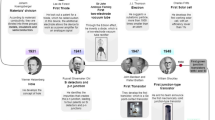
Overview
- Well-organized textbook with learning goals, clear figures and examples and solved problems
- Presents a new approach to semiconductors from the viewpoint of optoelectronics applications
- Written by authors with over 30 years of teaching experience in the subject
Part of the book series: Graduate Texts in Physics (GTP)
Access this book
Tax calculation will be finalised at checkout
Other ways to access
About this book
This book provides in-depth knowledge about the fundamental physical properties of bulk and low dimensional semiconductors (LDS). It also explains their applications to optoelectronic devices. The book incorporates two major themes. The first theme, starts from the fundamental principles governing the classification of solids according to their electronic properties and leads to a detailed analysis of electronic band structure and electronic transport in solids. It then focuses on the electronic transport and optical properties of semiconductor compounds, size quantization and the analysis of abrupt p-n junctions where a full analysis of the fundamental properties of intrinsic and doped semiconductors is given. The second theme is device-oriented. It aims to provide the reader with understanding of the design, fabrication and operation of optoelectronic devices based on novel semiconductor materials, such as high-speed photo detectors, light emitting diodes, multi-mode and single-mode lasers and high efficiency solar cells. The book appeals to researchers and high-level undergraduate students.
Similar content being viewed by others
Keywords
- Conductivity in Semiconductors
- Doped semiconductors
- Electronic Band Structure of Solids
- Electronic Properties of Semiconductors
- Intrinsic Semiconductors
- Optical Properties of Semiconductors
- Photo Detectors
- Semiconductor Lasers
- Semiconductor p-n Junctions
- Solar Cells
- Solar and Thermo-Photovoltaic Cells
- Textbook Semiconductors
Table of contents (7 chapters)
Authors and Affiliations
About the authors
Naci Balkan was in semiconductor research from 1975, when he started his PhD at the University of Glasgow to his death on June 26, 2015. At the time of his PhD, his main interest was in the field of amorphous semiconductors, in particular, Ge and Si grown with thermal evaporation or RF sputtering. He continued with research in amorphous semiconductors until 1983 and published widely on low frequency AC loss in amorphous Si and Ge. Between 1980 and 1983, he worked as a lecturer at Hacettepe, and Bogazici universities in Turkey. He joined the semiconductors group at Essex as a senior research officer in 1984, where his research interests moved to hot-electron transport, optical spectroscopy and instabilities in low dimensional III-V material systems such as GaAs/ GaAlAs and GaInAs/GaAs quantum wells. In 1990, he became a lecturer and established his own research group in semiconductor materials and devices. The application of hot-electrons in optoelectronic devices became the focal point of his interest. This research led to the discovery of hot-electron vertical cavity surface emitting lasers (HELLISH - VCSEL) and top-hat HELLISH for wavelength conversion and optical amplification. He was also engaged in the study of novel material systems for applications in optoelectronic devices, including GaN, GaInAsN, and GaInAsP, GaBiN for displays, lasers and solar cells.. He published over 200 research papers and book chapters, edited and co-edited special issue scientific journals, four reference books and co-authored a text book and a popular science book.
Ayşe Erol obtained her Ph.D. degree in 2002 from the Physics Department of the Istanbul University in Turkey. During her PhD studies, she joined to Prof. Naci Balkan’s group for researches on Dilute Nitride Semiconductors as a Research Fellow in 2001. From 1998 to 2004 she was employed as Research Assistant at Istanbul University and in 2004 she promoted to Assistant Professor Position and. She has been working as professor since 2013. Her main research areas include low dimensional semiconductors based on III-V compounds, novel semiconductor alloys, semiconductor optoelectronics, semiconductor lasers and nanostructures based on II-VI compounds. She has published several research papers and an a chapter of a textbook and she is co-author a popular science book, editor of a book titled Dilute III-V Nitride Semiconductors and Material Systems (Springer), co-author of textbook based on semiconductors and co-editor of two special issue scientific journals. She is currently professor in Solid State Division, Physics Department at the Istanbul University and director of Nano- and Optoelectronics Research Laboratories.Bibliographic Information
Book Title: Semiconductors for Optoelectronics
Book Subtitle: Basics and Applications
Authors: Naci Balkan, Ayşe Erol
Series Title: Graduate Texts in Physics
DOI: https://doi.org/10.1007/978-3-319-44936-4
Publisher: Springer Cham
eBook Packages: Physics and Astronomy, Physics and Astronomy (R0)
Copyright Information: Springer Nature Switzerland AG 2021
Hardcover ISBN: 978-3-319-44934-0Published: 12 October 2021
eBook ISBN: 978-3-319-44936-4Published: 11 October 2021
Series ISSN: 1868-4513
Series E-ISSN: 1868-4521
Edition Number: 1
Number of Pages: XII, 292
Number of Illustrations: 132 b/w illustrations, 24 illustrations in colour
Additional Information: Original Turkish edition published by Seçkin Yayıncılık Sanayi ve Ticaret A.Ş., Ankara, 2013
Topics: Semiconductors, Microwaves, RF and Optical Engineering, Optical and Electronic Materials, Optics, Lasers, Photonics, Optical Devices




